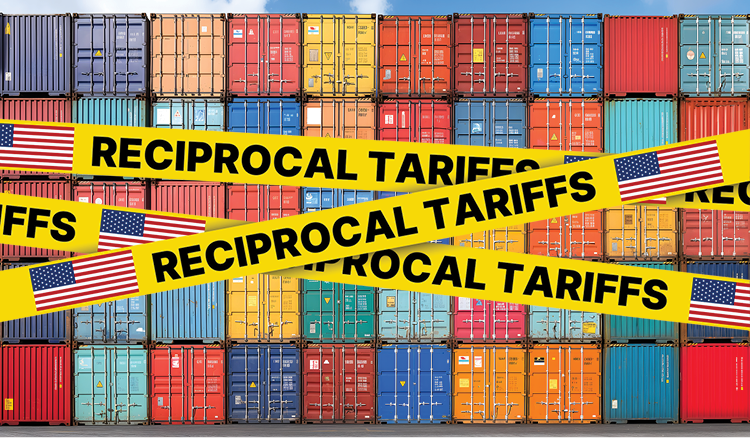How to Handle Attendance Issues
Imagine this: you drive in to work expecting everyone to show up for their shift and planning how you’re going to finally get ahead for a day and start tackling your backlog. Then when you get to the morning huddle, two of your 20 employees aren’t there. This ruins the productive day you had envisioned.
If that sounds familiar, you aren’t alone. Practically every organization faces attendance issues, and these issues account for large amounts of lost revenue. On top of that, with the labor shortage crisis of 2021, a lot of businesses are already understaffed.
Veryable connects businesses to workers every day, and we’ve heard the stories of how terrible attendance issues are. I coach businesses using our platform on how to handle attendance issues and show them how on-demand labor can help them through this challenge, and I’ve learned a few strategies from successful companies.
In this article, you’ll learn the issues caused by poor attendance and how you can handle these attendance issues.
Negative effects of attendance issues
According to the Bureau of Labor Statistics, the absence rate of full-time employees in 2020 was 3.0%. You probably recognize the problem and understand it is a major issue, but the actual impact is rarely tracked.
Attendance issues have many negative effects on an organization:
- Reduced productivity, efficiency, and revenue
- Reduced team performance and morale of the ones who do show up
- Increased overtime expenses to make up for lost time
- Supervisor time spent on attendance issues instead of making operational improvements
Ways to handle attendance issues with employees

When you constantly face attendance issues, it’s tempting to just accept that it’s a fact of life and there’s no use trying to change it. You shouldn’t accept that “it is what it is” attitude, because you can make a difference by taking specific actions against attendance issues.
Develop a policy and stick to it
A policy gives you something to coach by and hold people accountable to. Policy changes such as requiring a personal call from employees if they can’t attend can have an impact on absenteeism. A policy like this also provides supervisors the opportunity to relay the impact the absence will have on production, so that you can adjust accordingly. Communicate policies clearly and often. Constant coaching and clear communication will drive better results.
Focus on accomplishing tasks instead of filling hours
At the end of the day, what is important is achieving your KPIs, not punching a clock. Employees should be focused on getting the work done, and your planning should be focused on this too. Just filling the hours on the timecard from a planning perspective is just as ineffective as an employee taking their time because they’re paid by the hour. New efficiencies come to light when you can identify the least number of inputs (labor and otherwise) you need to accomplish a task in the same amount of time you could before. Take advantage of this opportunity when you encounter attendance issues.
Communicate goals and targets broadly across the organization
Communicating goals builds a team mentality, because everyone knows what the goal is and how they are moving toward the goal. When targets aren’t met, ask yourself and your employees what the roadblocks are that prevent them from hitting the goals. You can’t solve everything at once, but you can prioritize the lowest hanging fruit. Find goals that, once achieved, will have the largest impact and return on investment. Start with the easy ones, so your team can find quick wins and get the hang of the collaborative goal setting and tracking process. Then move onto harder goals with your newly energized team.
Account for the cost of absenteeism in your metrics
Post your KPIs in a high visibility area of your facility so employees see them. This will give them ample opportunities to remember the importance of their role and the impact their work has on the company.
Establish daily huddles for reviewing targets
Every day, review how you’re tracking toward your KPIs. This shows the team that you can’t achieve your targets unless everyone is driving to the same goal. Daily huddles build a team mentality. This is also a chance to discuss the impact that absenteeism has on those KPIs. If your team knows they’re all partly responsible for these KPIs, they won’t want to be the one holding everyone else back from reaching these goals.
Create a dynamic daily lineup
You should create a daily lineup that can change each day based on your needs. Incorporate hourly and daily targets, as well as how your lines need to be staffed so efficiency targets can be met. You can do this with a spreadsheet, and it doesn’t need to be overly complicated. Think of it like a baseball lineup: you know who is going to be on the field and where they will be positioned. At the start of your shift, you can use this to know what your plan is and adapt based on your goals and limitations that day.
As part of this, you need to plan for the exception. You should know what the plan is when everything is going well, but it’s critical to plan for what you’ll do differently when things don’t go right. Always have a contingency. You know what your productivity targets need to be, so develop a plan based on that. For example, if all of your ten employees show up, then your lineup should make it easy to achieve efficiency targets. If only eight of ten show up, you should have a contingency plan in place as part of your dynamic daily lineup, showing you exactly where to put employees when only eight of them show up.
Incentivize good attendance
Reward and recognize your high performers, rather than just punishing those who break the rules. This will make employees want to maintain a good attendance record. With incentives, not only are employees avoiding punishment, they’re earning a reward.
Compete by raising your wages
One way to incentivize employees is to make it worth their time to be at work. Some companies aren’t paying their employees enough to compete with the market rates. If that’s you, then raising your wages to be competitive could have an impact on attendance issues and attract more talent in one motion.
Use Lean thinking to make continuous improvements
Using the methodology and thinking of Lean, consider the root cause of why attendance rates are high and implement effective solutions.
Use a Plan-Do-Check-Act (PDCA) mentality by baselining your current state, testing your hypothesis, measuring results, evaluating them and trying again. This will lead to small improvements continuously throughout your business.
What else can you do to handle employee attendance issues?
If you’re having attendance issues among your full-time employees, finding workers fast through on-demand labor can help you stay on track. It can also enable you to flex your headcount even higher to match demand, so that you can achieve more efficient production and reach your KPIs.
To get started, read our blog about how on-demand labor connects you to workers fast and lets you build a flexible extension of your workforce.
Previous Posts
Breaking Down Trump’s New Reciprocal Tariffs, The De Minimis Loophole Closure, and The New Tariff On Beer Imports
The Future of Manufacturing and Logistics
Create a free business profile today to explore our platform.





